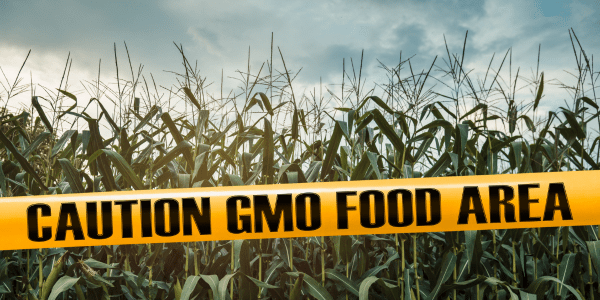Genetically Modified Food: Are There Health Risks?
In a world teetering on the precipice of a genetic revolution, a cloud of darkness overshadows our plates. A sinister presence lurks amidst the aisles of our supermarkets, concealed within the deceptive allure of seemingly innocent produce. It goes by the name of genetically modified food and is hailed as a marvel of scientific progress, hiding its true nature beneath a veil of uncertainty and unease.
Are we unwittingly feasting upon an insidious creation of genetically modified food, a Frankenstein’s feast that threatens to unleash a cataclysmic torrent of unforeseen consequences?
Ok, that was pretty dark, right? Seemingly straight out of some sort of horror novel or movie where crazed men in labs create genetically modified food like some mad scientist. Well, unfortunately, that’s basically where we are today.
In this article, we are going to dive deeper into the world of genetically modified food and whether or not it’s something you should have in your diet or if you should avoid it like the plague.
Disclaimer: This article is for informational purposes only and is not meant to treat or diagnose any condition. It is recommended that you speak with your doctor before making any changes to your nutrition plan.
Table of contents
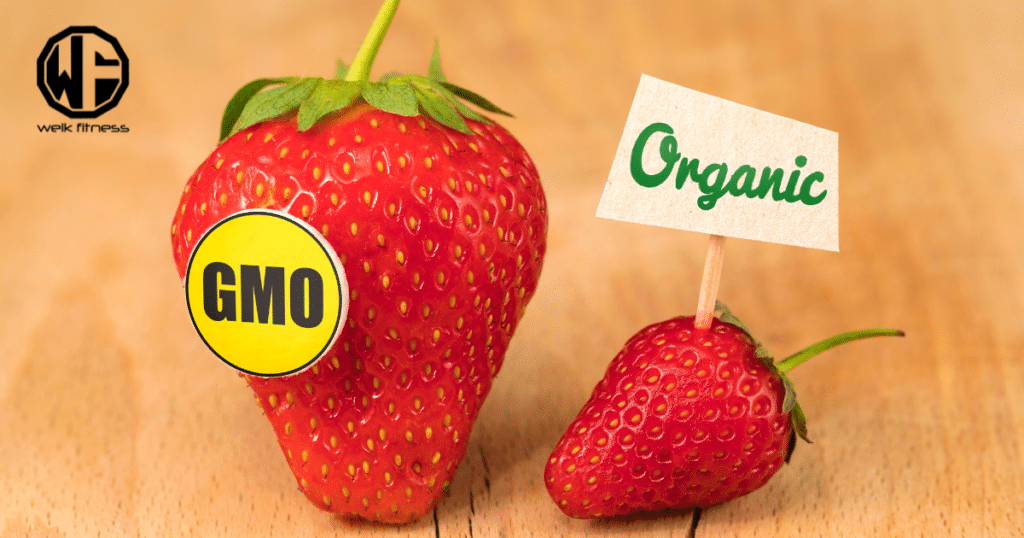
What is Genetically Modified Food?
Genetically modified food, often referred to as GMO (genetically modified organism), is food produced from crops or animals that have had their genetic material altered through genetic engineering techniques. These techniques involve manipulating an organism’s DNA to introduce specific traits or characteristics, typically by inserting genes from other species.
Creating genetically modified food involves identifying a desirable trait in one organism and transferring that trait to another. This can be done to improve crop yields, enhance resistance to pests or diseases, increase tolerance to environmental conditions, or enhance nutritional content.
Genetically modified food is commonly engineered to possess traits such as resistance to herbicides or insects. For example, certain corn and soybean varieties have been modified to produce a toxin that kills specific pests, reducing the need for chemical pesticides. Other modifications aim to improve nutritional value, such as increasing the vitamin or mineral content of crops.
It’s important to note that genetic modification can occur through conventional breeding methods as well, but the term “genetically modified food” typically refers to organisms that have undergone targeted gene manipulation in a laboratory setting.
The use of genetically modified food has sparked debates regarding its safety, environmental impact, and potential long-term effects on human health. Regulatory bodies in different countries have established guidelines and regulations to assess the safety and labeling requirements of GMO and their products.

While we should all believe that the powers that be want what’s best for us when it comes to health, you have to question why so many countries have banned and prohibited genetically modified food from being imported or cultivated.
Some places that have banned or prohibited GMOs include (but are not limited to):
- Australia
- Austria
- Belize
- Bulgaria
- Croatia
- Denmark
- Ecuador
- France
- Germany
- Greece
- Hungary
- India
- Italy
- Kenya
- Latvia
- Lithuania
- Madagascar
- Moldova
- Netherlands
- Northern Ireland
- Scotland
- Wales
- Norway
- Peru
- Poland
- Russia
- Saudi Arabia
- Serbia
- Slovenia
- Switzerland
- Turkey
- Ukraine
- Venezuela
Again, the above is not the complete list, and you can expect more countries to adopt restrictions as time passes, but it begs to question of why in America, it is deemed “safe” to consume genetically modified food. Is it because it’s actually safe or because it’s about money and being able to produce more food, regardless of the health concerns that it may possess?
What are the Dangers of Genetically Modified Food?
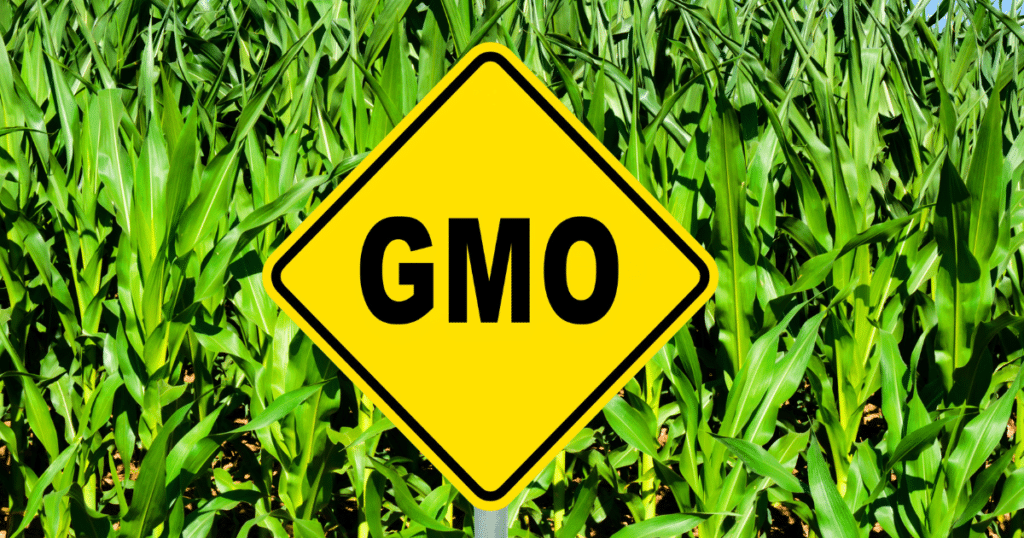
After understanding why genetically modified food exists, you’d assume it’s for the greater good. After all, why wouldn’t you want food that looks better, without blemishes, and overall, a better yield of crops that can put more food on your table? Unfortunately, that doesn’t exactly tell the whole story, despite what “health organizations” want you to believe.
There are many bodies and organizations that talk about the dangers of genetically modified food. While research has not been published to prove dangers directly exist, the below has been debated for quite some time.
1. Allergenicity
There is a concern that introducing genes from one species into another could potentially create new allergens or increase the allergenicity of certain foods. Extensive testing is conducted to assess the allergenic potential of genetically modified food before they are approved for commercialization.
2. Health effects
While the consensus is that genetically modified foods are safe, long-term effects on human health are still a topic of ongoing research (more on this in the next section). It is crucial to continue monitoring the effects of genetically modified food consumption and conduct rigorous scientific research.
3. Environmental impact
Genetically modified food can have unintended environmental consequences. For example, crops engineered for herbicide resistance may lead to the overuse of specific herbicides, potentially resulting in the development of herbicide-resistant weeds. Furthermore, there are concerns about the potential impact on non-target organisms, such as beneficial insects.
4. Genetic contamination and biodiversity
There is a risk of genetic contamination when genetically modified food is crossbred with conventional or wild relatives, potentially leading to unintended effects on biodiversity and the environment. Strict coexistence measures are often in place to minimize such risks.
5. Monoculture and farmer dependence
The dominance of genetically modified food in certain regions can lead to a loss of crop diversity and increased farmer dependence on specific seed varieties and associated agrochemicals. This may reduce resilience in agricultural systems.
6. Ethical concerns
Some people raise ethical concerns regarding the patenting and control of genetically modified food by a few large corporations, which can potentially impact farmers’ choices and access to seeds.
It’s important to note that these concerns represent areas for ongoing study and debate. Regulatory agencies and scientific organizations continue to assess the safety and potential risks of genetically modified food. It’s crucial to rely on scientifically supported information and independent research to form well-informed opinions on the subject.
Is Genetically Modified Food Causing Disease?
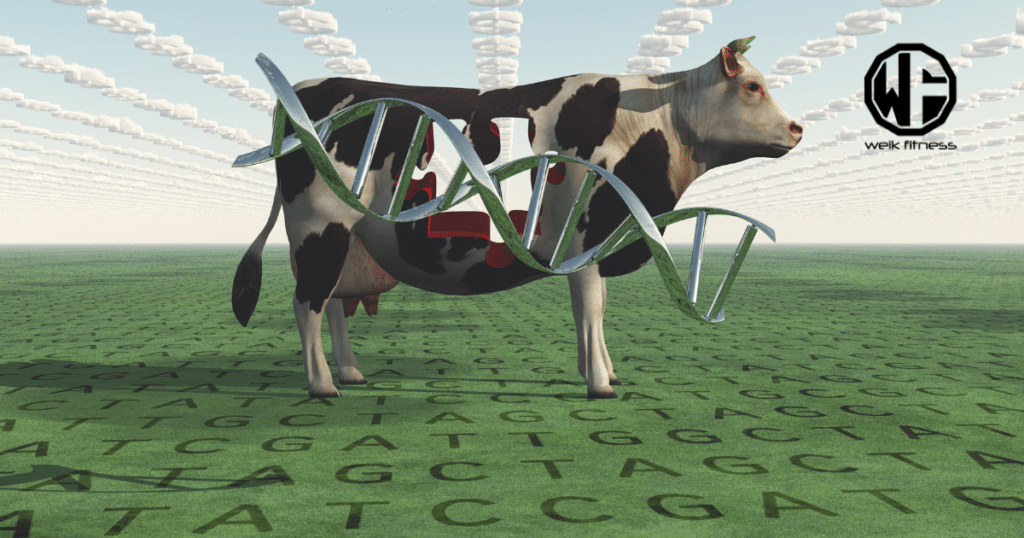
Full disclosure, as stated earlier, there are no studies that directly show genetically modified food causes issues. However, it’s very easy for research to be thrown out and not published. I don’t believe for a single second that if something goes against the grain or agenda, that it will be brushed under the rug. Call me a conspiracy theorist, but as we’ve witnessed, many of their “opinions” end up being true in the end.
Related Article: Be Aware! Hidden GMO Disclosures On Product Packaging
That said, is genetically modified food causing disease? The research says no, but most people who do their own research into the process that takes place question if the research is legitimate (I’m one of those people). If you believe GMOs are fine, I respect your opinion, and we’ll agree to disagree.
One study that doesn’t get much daylight is by Dona and Arvanitoyannis, which states their concern for genetically modified food that can be toxic and affect several organs and systems. They say, and I quote, “The results of most studies with genetically modified foods indicate that they may cause some common toxic effects such as hepatic, pancreatic, renal, or reproductive effects and may alter the hematological, biochemical, and immunologic parameters.”
Additionally, it has been noted that glyphosate has been used with many genetically modified foods, and research has been done specifically on the effects of glyphosate as it relates to disease and health issues. One study says, “Glyphosate enhances the damaging effects of other food-borne chemical residues and environmental toxins. The negative impact on the body is insidious and manifests slowly over time as inflammation damages cellular systems throughout the body. Here, we show how interference with CYP enzymes acts synergistically with disruption of the biosynthesis of aromatic amino acids by gut bacteria, as well as impairment in serum sulfate transport. Consequences are most of the diseases and conditions associated with a Western diet, which include gastrointestinal disorders, obesity, diabetes, heart disease, depression, autism, infertility, cancer, and Alzheimer’s disease. We explain the documented effects of glyphosate and its ability to induce disease, and we show that glyphosate is the ‘textbook example’ of exogenous semiotic entropy: the disruption of homeostasis by environmental toxins.”
Here’s a question I’d like you to ask yourself. If no potential health risks were involved with eating genetically modified food, why are so many CPG brands calling out “non-GMO” or “GMO-free” on their labels? Brands call out things that are unhealthy on their packaging to help people make better buying decisions as it relates to their health and nutrition. So, it would only make sense that they know and understand that genetically modified food is unhealthy, right?
What are Some Examples of Genetically Modified Food?
There are several examples of genetically modified food that have been developed and are currently in commercial production. Below are some of the commonly consumed genetically modified food that you eat, possibly without even knowing their GMO status.
Soybeans: Genetically modified soybeans were among the first commercially available genetically modified crops. They are often engineered to be herbicide-tolerant, meaning they can withstand applications of specific herbicides, allowing for more effective weed control.
Corn: Genetically modified corn is widely cultivated. It can be engineered for various traits, such as herbicide tolerance and resistance to specific pests, like the European corn borer and corn rootworm.
Canola: Genetically modified canola has been developed to resist herbicides, primarily glyphosate. This trait allows for better weed control in canola fields.
Cotton: Genetically modified cotton varieties are commonly grown with insect resistance or herbicide tolerance traits. Some cotton varieties have been engineered to produce toxins that are toxic to specific pests, reducing the need for chemical insecticides.
Papaya: A genetically modified papaya variety known as Rainbow papaya was developed to combat the devastating ringspot virus, which threatened papaya crops in Hawaii.
Squash: Certain varieties of genetically modified summer squash, such as yellow crookneck and zucchini, have been developed to resist certain viruses, helping protect the crops from disease.
Apples: Arctic apples are genetically modified to have reduced browning when sliced or bruised. This modification was achieved by silencing the gene responsible for browning.
Potatoes: Genetically modified potatoes have been engineered for traits such as reduced bruising and enhanced resistance to pests and diseases.
How Can You Get Away from Genetically Modified Food?
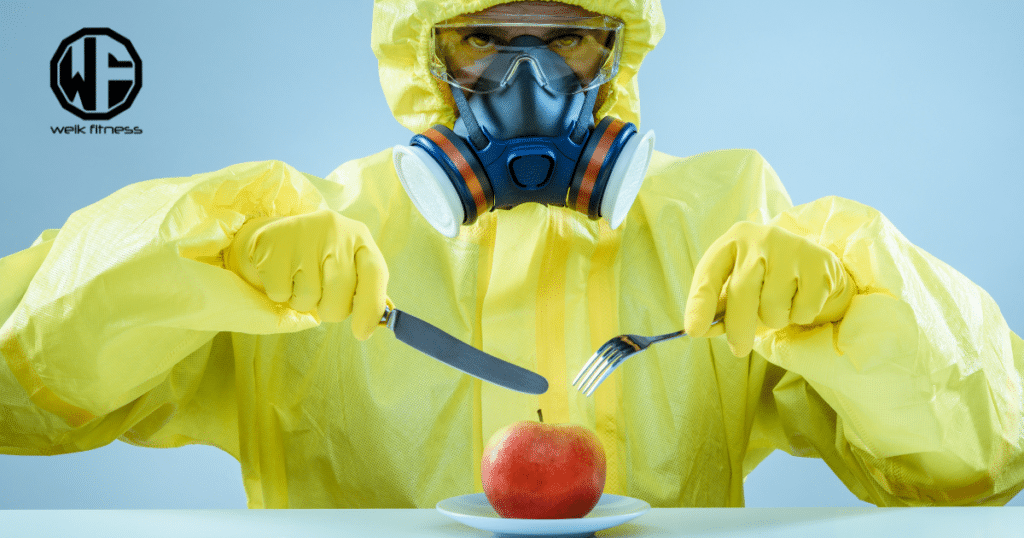
Avoiding genetically modified food completely can be challenging since many commonly consumed crops, such as corn, soybeans, and canola, have genetically modified varieties. That being said, below are some steps you can take to reduce your exposure to genetically modified food.
Choose organic
Organic foods are not allowed to contain genetically modified ingredients. Look for products labeled as “certified organic” or bearing the USDA Organic seal.
Read labels
In some countries, GMOs and ingredients are required to be labeled as such. Familiarize yourself with common genetically modified food (such as the examples provided earlier) and their derivatives, and check ingredient lists for potential GMOs.
Choose non-GMO verified products
Look for products bearing the Non-GMO Project Verified seal. This indicates that the product has undergone testing to ensure it contains no genetically modified food or ingredients.
Buy local and from small-scale farmers
Purchasing directly from local farmers or farmers’ markets can provide an opportunity to inquire about their farming practices. Small-scale farmers may be less likely to use genetically modified seeds.
Grow your own food
Consider growing your own fruits, vegetables, and herbs. You have control over the seeds you use and can choose non-GMO varieties. Organic gardening practices can further ensure your produce is free from genetically modified organisms.
Choose GMO-free animal products
If you consume meat, eggs, or dairy products, seek products that are labeled as GMO-free or from animals raised on non-GMO feed.
Avoid processed foods
Processed foods often contain genetically modified ingredients such as corn, soy, and canola derivatives. Look for whole, unprocessed foods to reduce your GMO exposure and shift away from genetically modified food.
Stay informed
Keep up with the latest GMO regulations, labeling requirements, and research developments. Stay informed about companies and brands that prioritize non-GMO ingredients.
Remember, while taking these steps can help reduce your exposure to genetically modified food, completely avoiding it may be difficult unless you draw a line in the sand and do your homework on every single food and product you put in your mouth. Maintaining a balanced diet and focusing on overall food safety and nutrition remains important.
If you want some good material you can watch or read on genetically modified food, check out the below for even more info on this topic:


*Disclosure: This article may contain affiliate links or ads, which means we earn a small commission at no extra cost to you if you make a purchase through these links. These commissions help support the operation and maintenance of our website, allowing us to continue producing free valuable content. Your support is genuinely appreciated, whether you choose to use our links or not. Thank you for being a part of our community and enjoying our content.
PLEASE CONSIDER SHARING THIS ON YOUR SOCIAL MEDIA TO HELP OTHERS LEARN MORE ABOUT THIS TOPIC.


